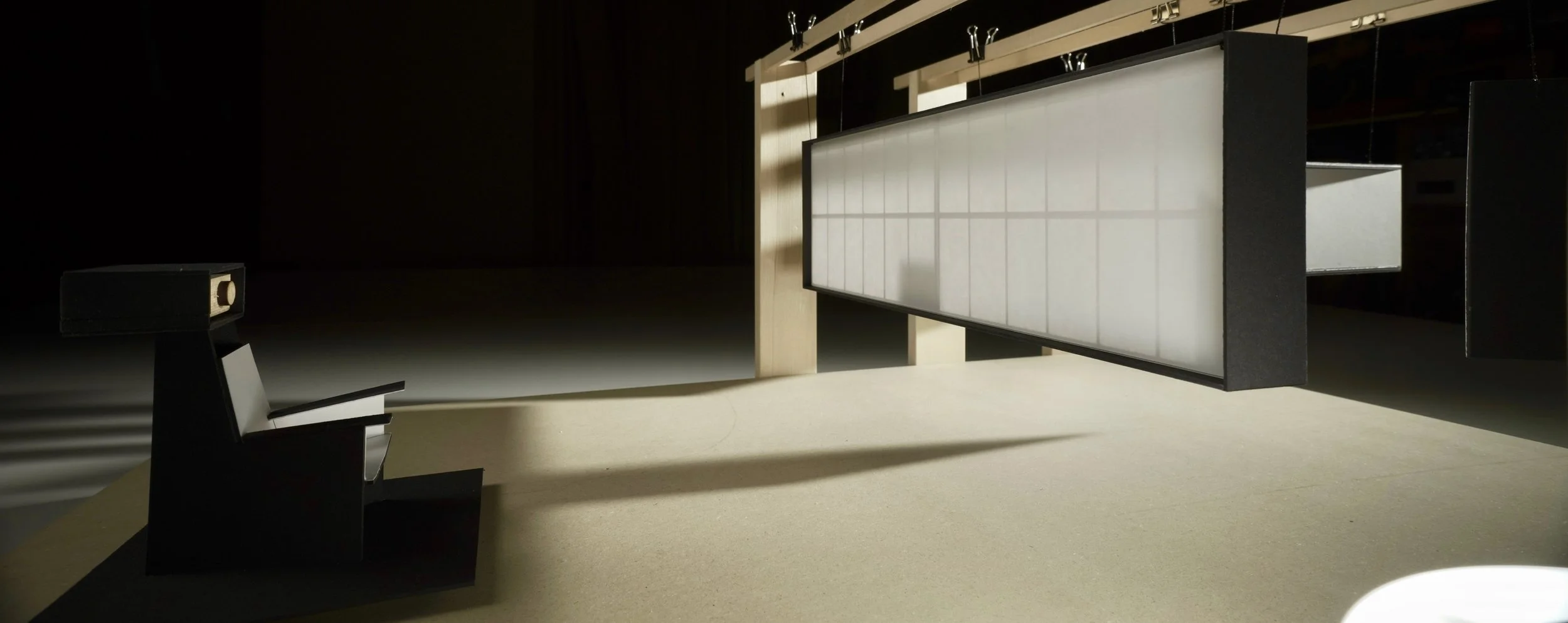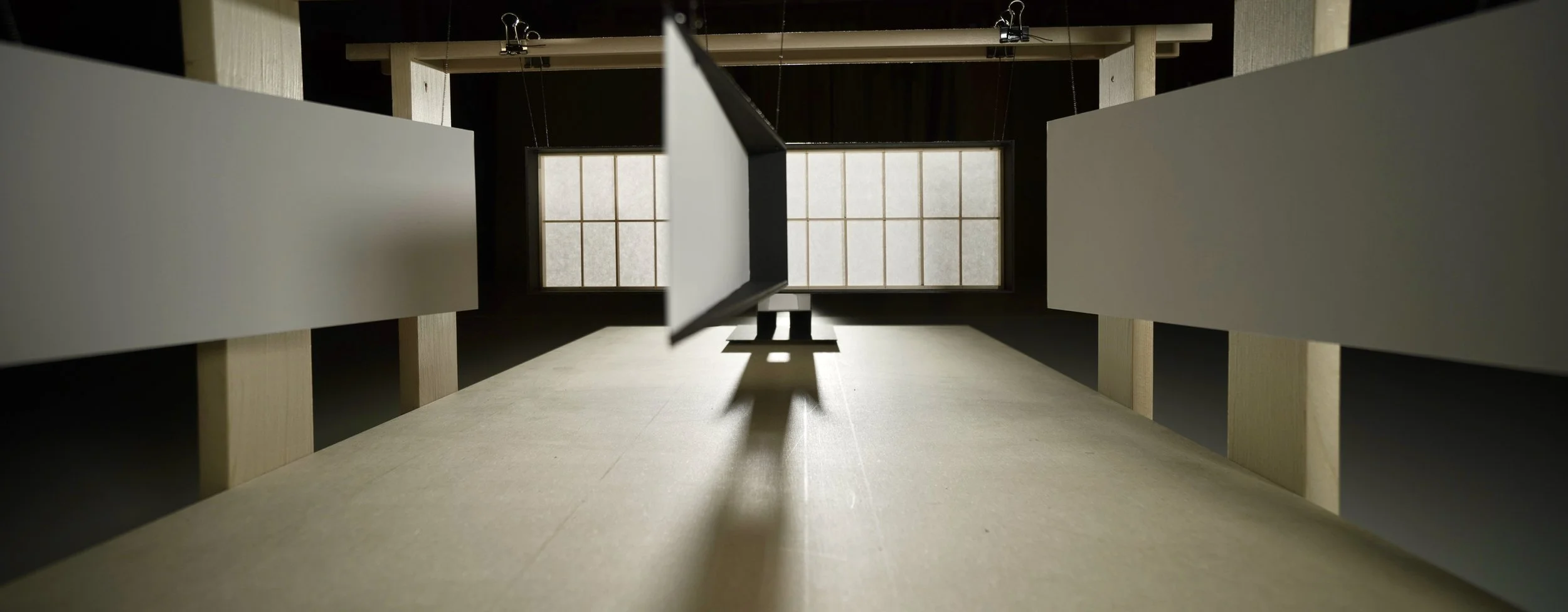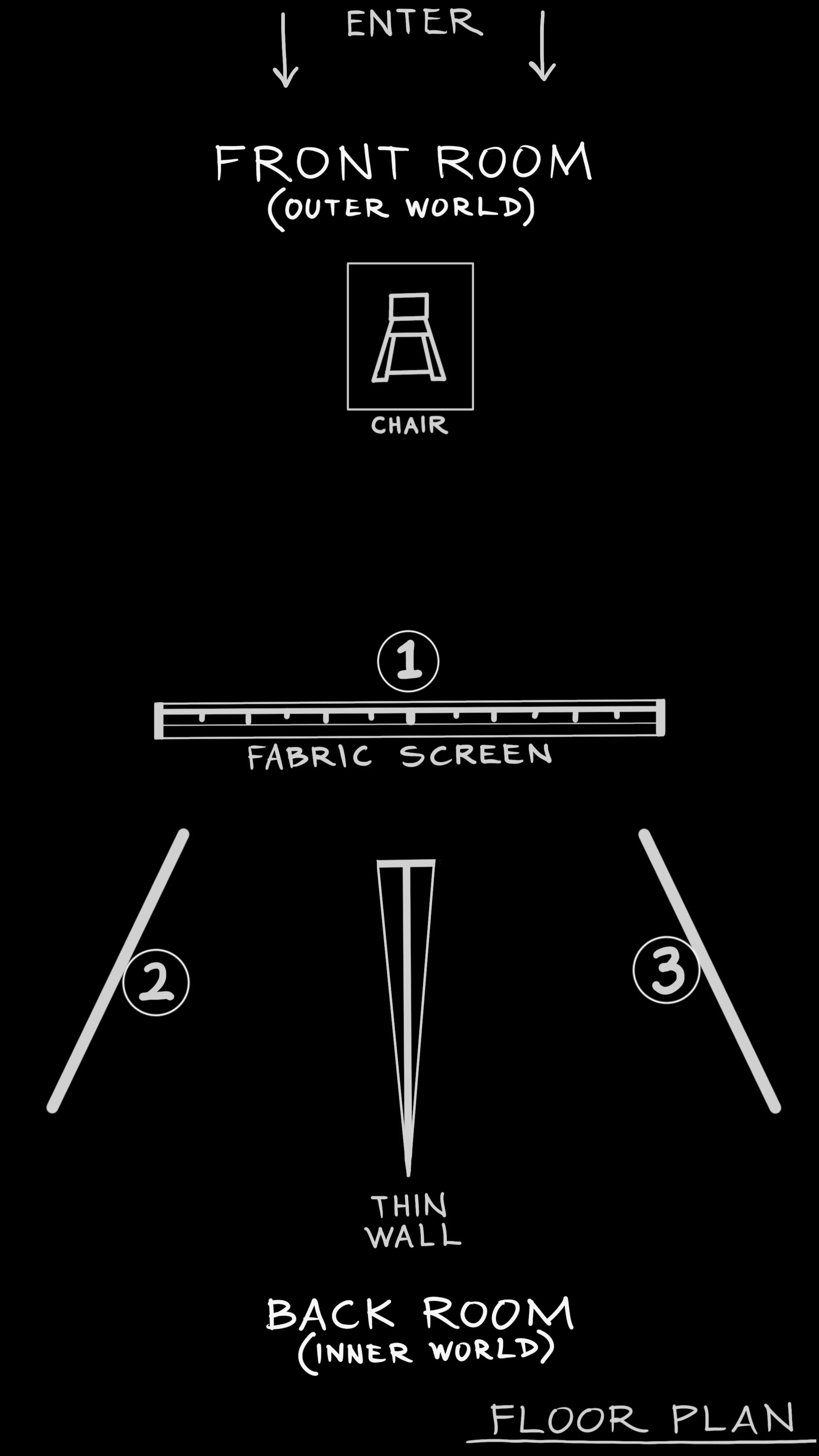Above: INSIGHT Intro Video - An immersive three-channel video instlaltion with its spatial layout
INsight
Project Overview
INSIGHT is a three-channel video and spatial installation exploring how shifts in perception reshape our experience of work, presence, and self. Rooted in Eastern reflective practice, it draws from four years of self-filming in which the artist traces the shifts between fixation and presence. Through synchronized projections and an immersive spatial design, viewers enter this oscillation—echoing the Zen phrase: Before enlightenment, chop wood, carry water. After enlightenment, chop wood, carry water. While external actions remain the same, inner awareness transforms.
Personal Context (Roger)
In 2015, I began filming myself working alone on physically demanding, self-taught projects on the land, hoping to better understand my relationship with work and the root of my lifelong anxiety. The camera became my tool for self-observation.
The act of self-filming not only slowed my usual task-driven rhythm but also opened my attention beyond the work itself. Adjusting the camera made me notice weather, light, and pauses I would normally overlook. Each night, organizing and reviewing the footage forced me to watch myself on screen, revealing what I had missed while working: that I was part of a larger environment where many things were unfolding. It also reminded me how my thoughts during work were often intensely goal-oriented—and anxious.
Over more than 3,000 hours of recording across four years, I experienced this shift again and again—from a task-focused mindset to a more expansive sense of being part of a greater whole. Slowly, I uncovered that my constant drive to learn new skills had been fueled by a fear of inadequacy rooted in a critical upbringing.
As Eckhart Tolle wrote, Doing is never enough if you neglect Being. INSIGHT makes this distinction tangible.
Artistic Framework
INSIGHT translates the experience of perceptual shift into a physical, navigable space. A translucent projection screen bisects the installation, forming two connected zones:
Outer World (Front Room) — A single projection (Video 1), filmed by Roger, is cast from a custom chair he designed and built. The chair functions as a sculptural proxy for the artist’s gaze—the self-observation that initiates the project.
Inner World (Back Room) — Two animations face each other across the space: one drawn from sketches and working notes (Video 2), the other from observational drawings of moments and scenes (Video 3). They embody two modes—focused task and open presence. A thin wall with tapered shelves divides the space, marking the fine threshold between these states, while objects on both sides ground the work in lived experience.
The spatial design leads visitors from the outer world (front room)—where external action is observed—into the inner world (back room), where states of mind are held in contrast and dialogue. This passage mirrors the work’s psychology: a shift from external perception to internal reflection.
Installation Experience
Visitors first enter the Outer World, encountering Video 1: a seemingly confident, highly skilled figure absorbed in multiple tasks.
Moving past the translucent screen into the Inner World, they see Video 1 continue through the screen, now perceived with the two animations. The thin wall structures how viewers navigate: they may choose to focus on one animation with Video 1, or move to the end of the wall, where all three projections come into view at once, divided by the wall.
This physical shifting between projections makes perceptual transformation tangible—external actions remain constant while internal states are transformed.
Installation Framework and Credits follow below.
Above: A selected clip from Video 1, projected in the front room—presenting the outer world.
Above: Front Room (Outer World) Model: Chair and the Translucent Screen for Projecting Video 1
Above: Back Room (Inner World) Model: Video 1 seeped through the screen. Two animations, Video 2 (left) and Video 3 (right), on opposite walls. A thin wall with a tapered shelf on each side partially divides the space. View the Floor Plan for reference.
Above: Selected clips— Video 2 (left) perceived with Video 1
Above: Selected clips — Video 3 (right) perceived with Video 1
Above: View from the end of the thin wall, where all three projections came into view all at once.
Objects placed on each side of the thin wall’s shelf ground the experience in the physical world: tools on the left and found natural objects on the right.
Installation Framework
Format: Three synchronized video projections
Duration: 9-minute loop per video.
Dimensions: Variable; dependent on site and spatial configuration; all three videos are complete, and the spatial design — with finalized drawings and a model — is ready for customization to the exhibition site.
Adaptability: Conceived as a three-channel immersive installation, INSIGHT can also be shown as a single-channel projection that combines all three works, for contexts where the full spatial environment is not possible.
Credits
INSIGHT is funded by the BC Arts Council in Canada.
We acknowledge the contributions of Dr. Heesoon Bai and Dr. Avraham Cohen, both scholars and psychotherapists, who were engaged as consultants to support our research discussions related to INSIGHT. We also thank Dr. Zuzana Vasko, an artist, scholar and educator, for her thoughtful presence and participation in the discussion.


